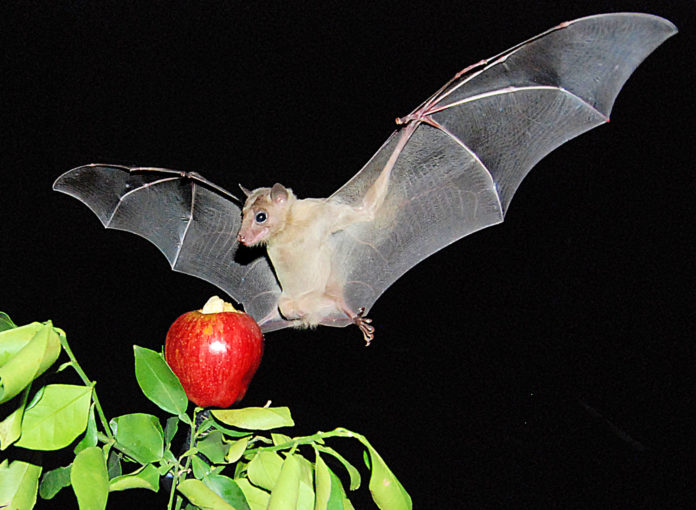(MahRabuNews)
Join our WhatsApp groupSubscribe to our Daily Roundup Email
Rashi (Vayikrah 11:18) calls it a “Tinshemes.” Rav Saadya Gaon calls it an Atalef. But, whatever shekatzim that fly enumerated in Parshas Shmini that are definitively not kosher that the bat actually is – something is happening to them for the very first time in history.
Researchers at Tel Aviv University are now tracking fruit bats from birth to maturity, in an attempt to understand how they navigate when flying long distances.
The surprising results: Fruit bats, just like humans, build a visual cognitive map of the space around them, making use of conspicuous landmarks.
In this case, bat pups from Tel Aviv University came to know the city by looking for large unique structures such as the Azrieli Towers, the Dizengoff Center etc. The groundbreaking study was conducted by Professor Yossi Yovel, together with students Amitai Katz, Lee Harten, Aya Goldstein and Michal Handel from the Sensory Perception and Cognition Laboratory at the Department of Zoology. The paper was published in July 2020 as the cover story of the prestigious Science Magazine.
“How animals are able to navigate over long distances is an ancient riddle,” explains Professor Yovel. “Bats are considered world champions of navigation – they fly dozens of kilometers in just a few hours, and then come back to the starting point. For this study we used tiny GPS devices – the smallest in the world, developed by our team, in an experiment never attempted before – tracking bat pups from the moment they spread their wings until they reach maturity, in order to understand how their navigation capabilities develop.”
The researchers monitored 22 fruit bat pups born in a colony raised at Tel Aviv University – from infancy to maturity, tracking them as they scoured the city for food. The results show that Tel Aviv bats navigate the space around them in much the same way as the city’s human inhabitants.
“Bats use their sonar to navigate over short distances – near a tree, for example,” says Professor Yovel. “The sonar doesn’t work for greater distances. For this, fruit-bats use their vision.”
Altogether, the researchers mapped some 2000 bat flight-nights in Tel Aviv. They found something extraordinary:
Bats construct mental maps.
They learn to identify and use salient visual landmarks such as the Azrieli Towers, the Reading Power Station and other distinct features that serve as visual indicators.
Professor Yovel explains, “The most distinct proof of this map lies in their ability to perform shortcuts. Like humans, bats at some stage get from one point to another via direct new routes not previously taken. Since we knew the flight history of each bat since infancy, we could always tell when a specific bat took a certain shortcut for the first time.”
The professor continued, “We discovered that when taking new, unknown routes the bats flew above the buildings. Sending up drones to the altitude and location where a bat had been observed, we found that the city’s towers were clearly visible from this high angle. Here is another amazing example of how animals make use of man-made features.”
All this research, however, still won’t help us resolve the machlokes as to which of the terms in Shmini refers to the bat.

